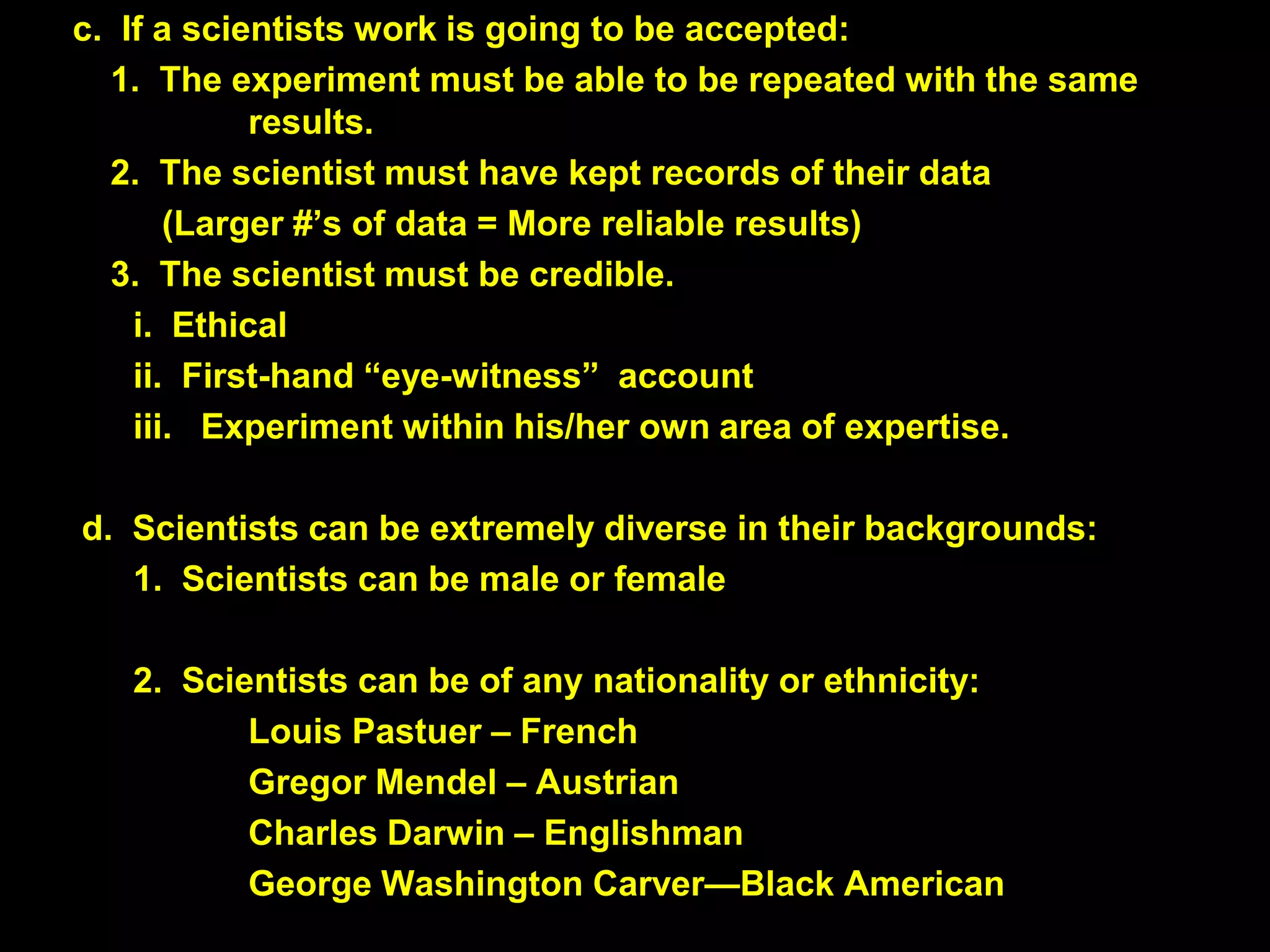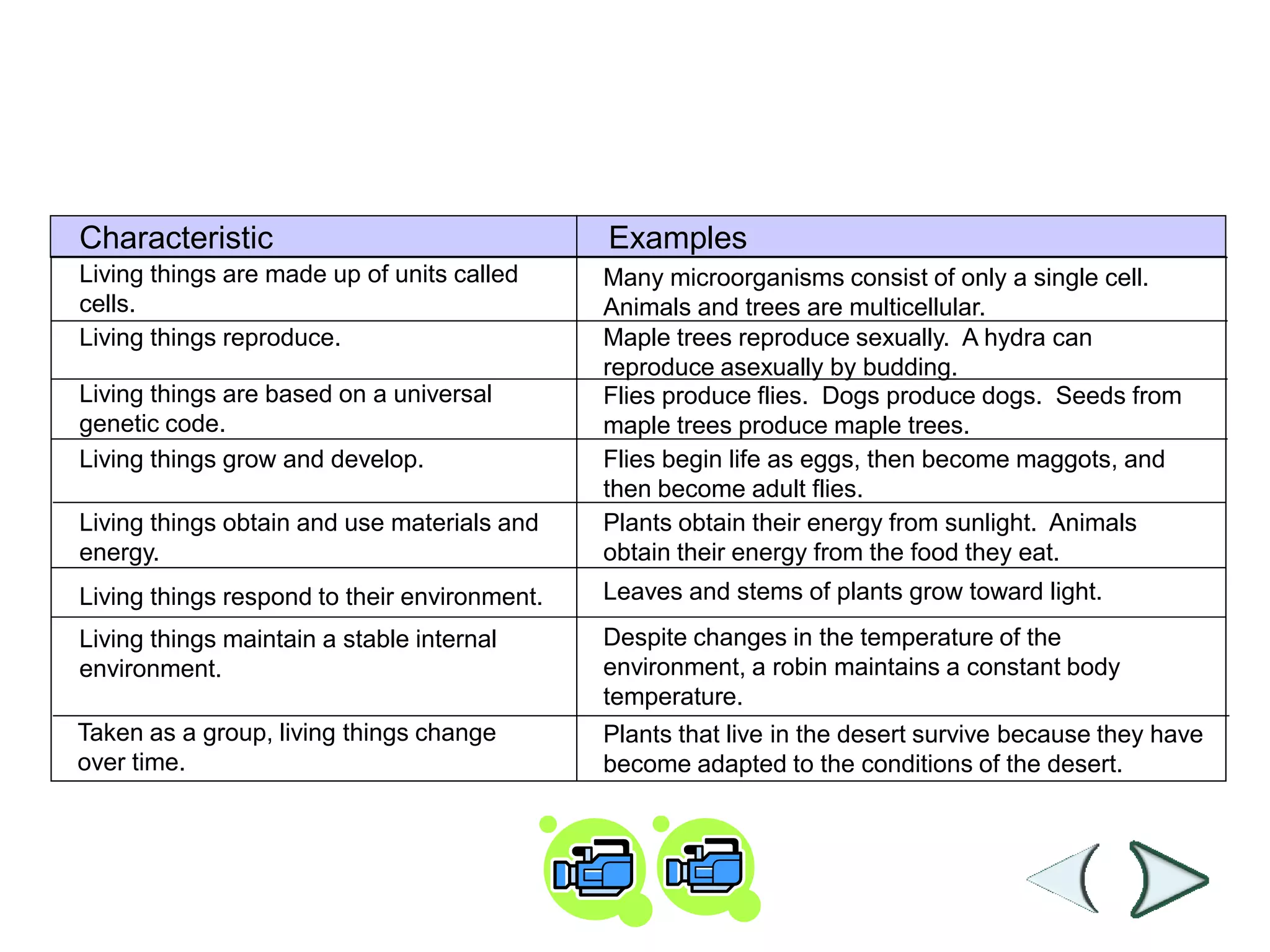The document summarizes key concepts in science including the scientific method, characteristics of living things, and levels of biological organization. It discusses how early scientists like Redi, Needham, Spallanzani, and Pasteur designed and repeated experiments to disprove spontaneous generation and develop the theory of biogenesis through controlled experiments. Their work established principles of experimental design still used today.






























